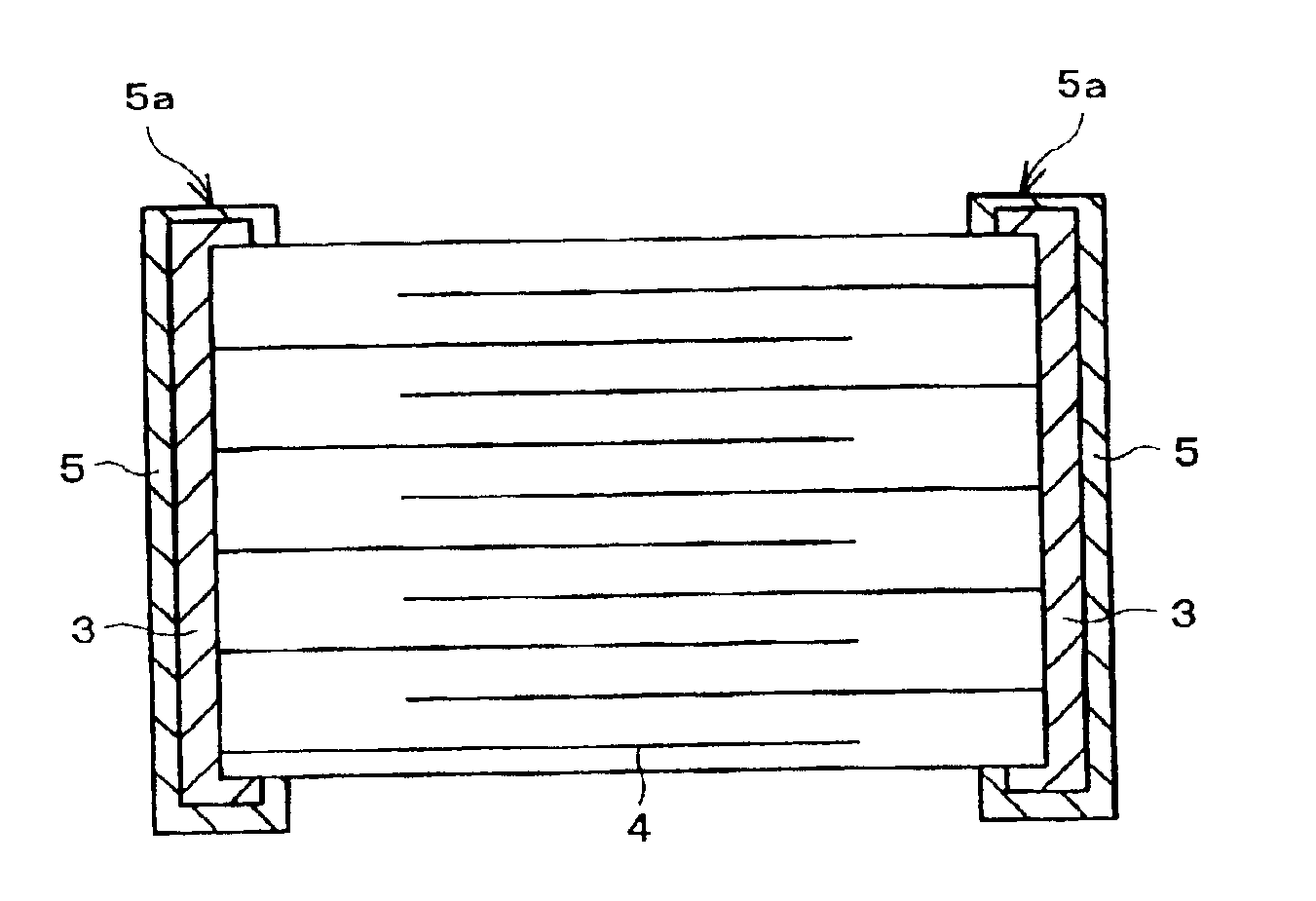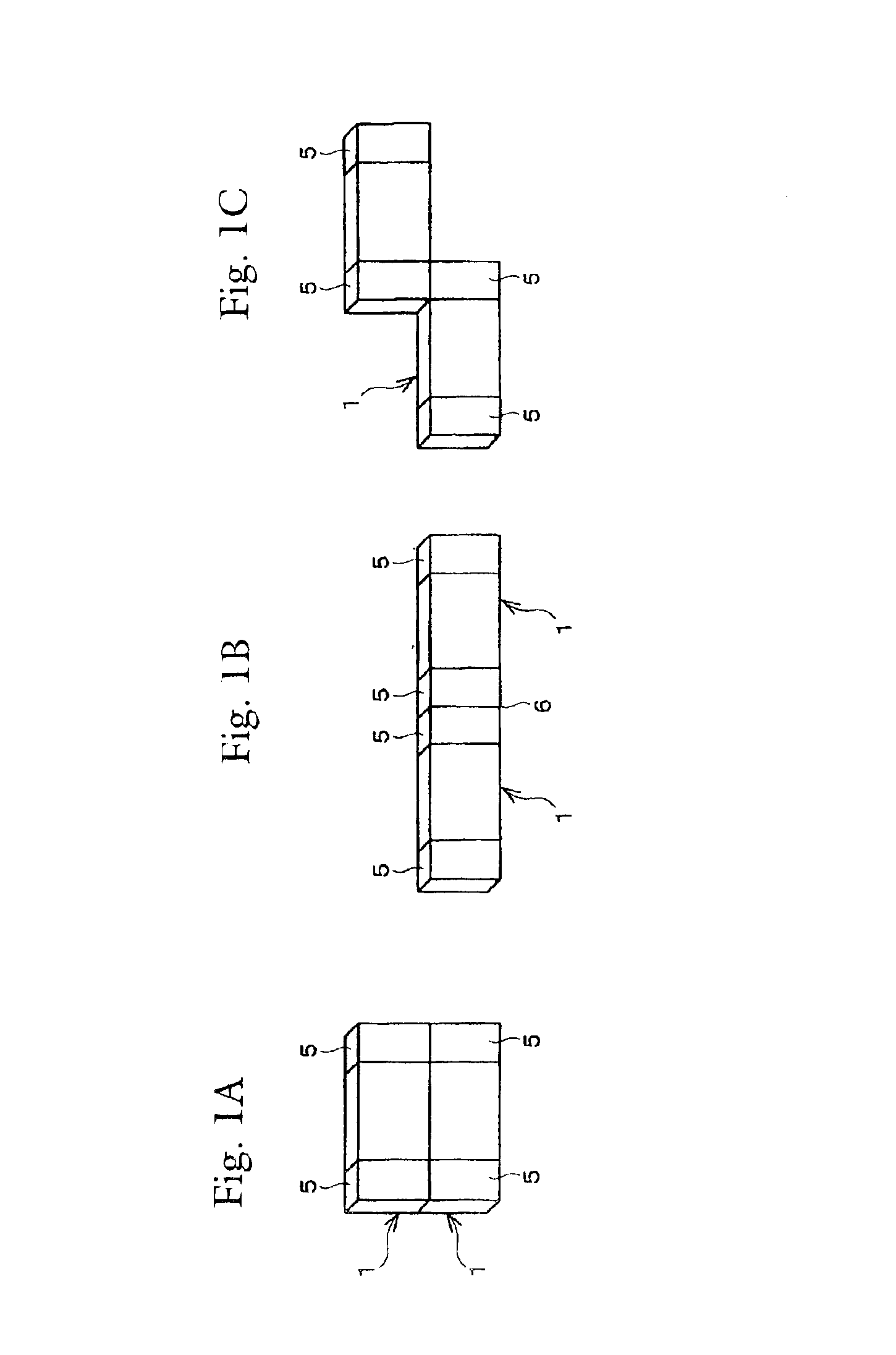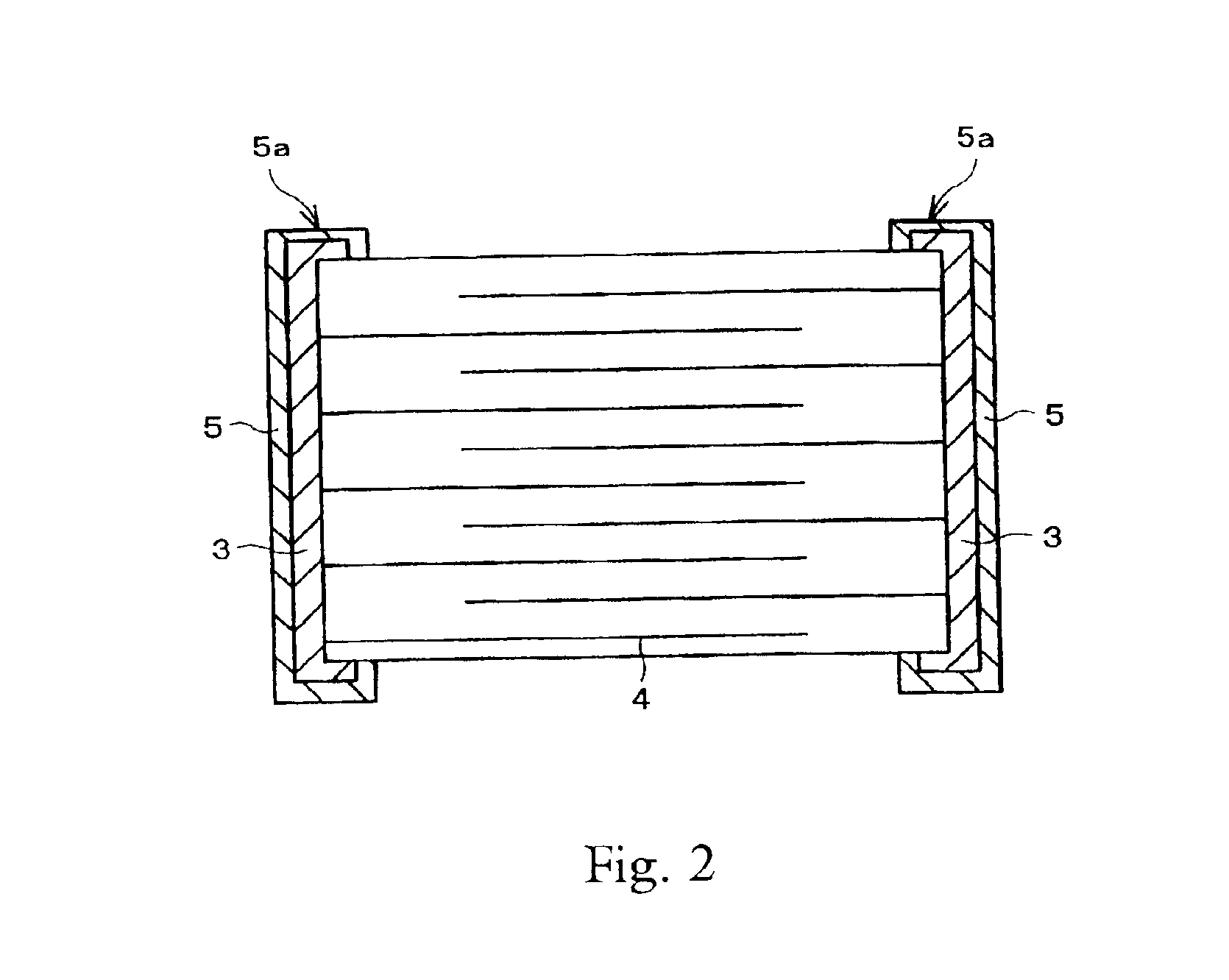Method for plating electrodes of ceramic chip electronic components
a technology of electronic components and ceramic chips, applied in the direction of electrolysis components, basic electric elements, semiconductor devices, etc., can solve the problems of increasing the cost of forming electrodes. achieve excellent solder wettability
- Summary
- Abstract
- Description
- Claims
- Application Information
AI Technical Summary
Benefits of technology
Problems solved by technology
Method used
Image
Examples
example 1
[0057]A method for plating electrodes of ceramic chip electronic components, according to the present invention, will now be concretely described with reference to the following examples and comparative examples.
[0058]Table 1 shows the compositions of plating baths used in Examples 1-1 to 1-5 and the evaluation results of the plating films formed in these plating baths.
[0059]
TABLE 1Plating bathEvaluationComplexingConductingAdhesionHull cellExampleTin saltagentagentBrightenerAntioxidantpHratiotest1-1Tin (II)DiammoniumSodiumDimethylalkylPyrocatechol3.5goodgoodsulfamatehydrogensulfamatelauryl betaine1.0 g / L(7%)0.20 mol / Lcitrate1.00 mol / L0.3 g / L1.50 mol / L1-2Tin (II)Malonic acidSodiumβ-naphtholHydroquinone4.0goodverysulfamate1.20 mol / Lsulfamateethoxylate1.0 g / L(5%)good0.40 mol / L1.00 mol / L0.1 g / L1-3Tin (II)HeptoicSodiumPolyoxyethyleneAscorbic acid5.0goodverysulfamateacidsulfamateoctylphenyl1.0 g / L(6%)good0.10 mol / L1.00 mol / L2.00 mol / Lether 0.5 g / L1-4Tin (II)GluconicSulfamicPhenolsulfonicA...
example 2
[0074]In order to obtain a lustrous plating film, the kinds of the brightener were varied and evaluated according to the above-described criteria. Since it has already been known that the compositions in Table 1 lead to preferred results, the brightener evaluation was performed based on Example 1-1. Specifically, the brightener of Example 1-1 was replaced with the brighteners of Examples 2-1 to 2-5 shown in Table 3 to prepare the plating baths of Examples 2-1 to 2-5. The pH was set at 5.
[0075]
TABLE 3Plating bathEvaluationComplexingConductingAdhesionHullExampleTin saltagentagentBrightenerAntioxidantpHratiocell test2-1Tin (II)DiammoniumSodiumPolyoxyethylenePyrocatechol5.0Goodgoodsulfamatehydrogensulfamatealkylpropylenediamine1.0 g / L(4%)0.20citrate1.00 mol / L0.3 g / L2-2mol / L1.50 mol / Lα-naphthol ethoxylateGoodvery0.1 g / L(6%)good2-3PolyoxyethyleneGoodverynonylphenyl ether(7%)good0.3 g / L2-4α-naphthol ethoxylateGoodgood0.3 g / L(3%)2-5PolyoxyethyleneGoodgooddodecylamine(5%)0.3 g / L
[0076]Table 3...
PUM
| Property | Measurement | Unit |
|---|---|---|
| concentration | aaaaa | aaaaa |
| size | aaaaa | aaaaa |
| concentration | aaaaa | aaaaa |
Abstract
Description
Claims
Application Information
 Login to View More
Login to View More - R&D
- Intellectual Property
- Life Sciences
- Materials
- Tech Scout
- Unparalleled Data Quality
- Higher Quality Content
- 60% Fewer Hallucinations
Browse by: Latest US Patents, China's latest patents, Technical Efficacy Thesaurus, Application Domain, Technology Topic, Popular Technical Reports.
© 2025 PatSnap. All rights reserved.Legal|Privacy policy|Modern Slavery Act Transparency Statement|Sitemap|About US| Contact US: help@patsnap.com



